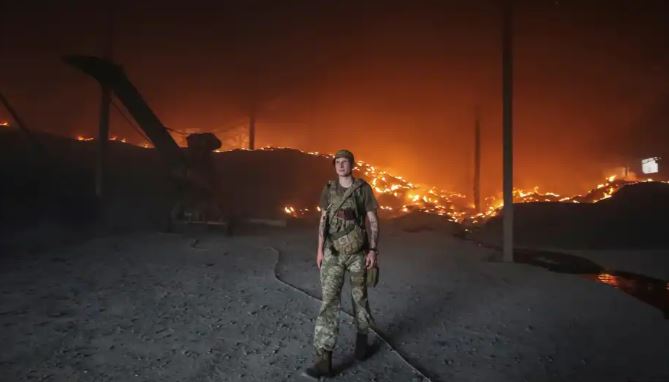
KYIV, June 2 (NNN-AGENCIES) — Russian forces edged closer to taking the key eastern Ukraine city of Severodonetsk but Kyiv’s hopes of holding off their invaders were boosted by a US pledge of more advanced rocket systems to help their defence.
“The Russians control 70 percent of Severodonetsk,” Lugansk region governor Sergiy Gaiday announced on Telegram, adding that Ukrainian forces were withdrawing to prepared positions.
“If in two or three days, the Russians take control of Severodonetsk, they will install artillery and mortars and will bombard more intensely Lysychansk,” the Ukrainian-held city across the river, he said.
A key industrial hub and with Lysychansk the last pocket of resistence in the eastern Lugansk region, Severodonetsk has become a target of massive Russian firepower since the failed attempt to capture Kyiv.
Oleksander Motuzianyk, spokesman for Ukraine’s defence ministry, said there was “fighting in the streets” in Severodonetsk, and the Russians had reached the city centre.
“The Ukrainian armed forces are actively resisting them,” he said.
In a boost for the outgunned Ukrainian military, President Joe Biden confirmed that more US weaponry was on the way to allow them to “more precisely strike key targets” in Ukraine.
The new weapon is the Himars multiple launch rocket system, or MLRS, a mobile unit that can simultaneously launch multiple precision-guided missiles.
They are the centrepiece of a $700 million package being unveiled Wednesday that also includes air-surveillance radar, more Javelin short-range anti-tank rockets, artillery ammunition, helicopters, vehicles and spare parts, a US official said.
With a range of about 50 miles (80 kilometres), they will allow Ukrainian forces to strike further behind Russian lines.
Kremlin spokesman Dmitry Peskov accused Washington of “adding fuel to the fire”, saying “such supplies” did not encourage Kyiv to resume peace talks.
Biden said that the United States would not support attacks inside Russia, writing in the New York Times: “We do not seek a war between NATO and Russia.”
Later, US Secretary of State Antony Blinken said Ukraine had promised not to use the new missiles inside Russia — and warned of a long conflict ahead.
“As best we can assess right now, we are still looking at many months of conflict,” he told a news conference with NATO Secretary-General Jens Stoltenberg.
In an intelligence briefing, Western officials said Russia is making “incremental but pretty steady gains” but even after taking Severodonetsk, there would be “a lot more challenges to come”.
“There are some river crossings that need to be completed after the closure of the (Ukraine-controlled) pocket and we’ve seen previously how difficult those river crossings are.”
The European Union has also sent weapons and cash for Ukraine, while levelling unprecedented economic sanctions on Moscow.
Germany said Wednesday it would deliver an air defence system capable of shielding a major city from Russian air raids, although it will take months to get to the frontline.
EU leaders agreed this week to ban most Russian oil imports but played down the prospects of shutting off Russian gas on which many member states are hugely dependent.
Moscow said a “reorientation” was under way to find alternative destinations for its oil, as it moved to “minimise the negative consequences”.
The sanctions are biting — a panel of investors said Wednesday Russia has failed to pay $1.9 million of accrued interest on a sovereign bond.
And Russian energy giant Gazprom said its gas exports to countries outside the former Soviet Union dropped by more than a quarter year-on-year between January and May after losing several European clients.
Russia has sought to get around sanctions by demanding payment for gas in rubles, cutting off countries that refuse.
Denmark was set to become the latest target Wednesday, after the Netherlands, Finland, Poland and Bulgaria. — NNN-AGENCIES






